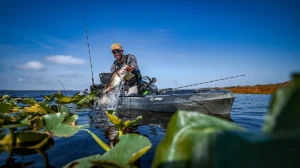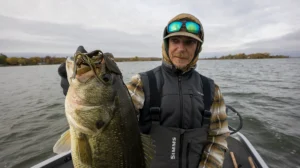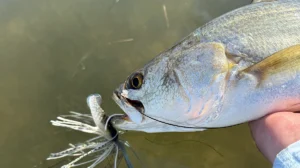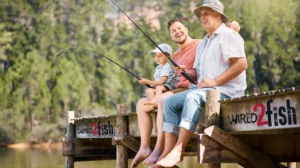Winter bass fishing can be pretty fun at first, I guess. The heat of the summer finally begins to fade and we’re met with cool nights which eventually turn into comfortable and breezy days. For the angler, this is a welcome reprieve from all of the heat and humidity of months past. The thing is, however, these perfect-weather days rarely last very long until winter rears its ugly head and absolutely kicks us in the pants. In a matter of days it can get miserably cold, windy and downright uncomfortable on the water.
But the show must go on. There’s always a hungry bass somewhere, so it’s our job to find and catch it.
I’ve had a lot of conversations the past few weeks with buddies about the evolution of bass fishing. There’s absolutely no doubt that the technology these days is amazing and the forward progress of the bass-fishing industry is nearly unbelievable. But man, I’ll be honest with you—sometimes it pays to keep it simple and keep things old school. Not always, of course, but I’ve personally realized through the years that when the fishing gets super tough and the conditions get uncomfortable, going a little old school can make a world of difference in your fishing success.
With all of the tools at our disposal these days, it’s easy to suffer from “paralysis by analysis” but that’s absolutely not always the case. So let’s talk about a few things that will simplify your winter bass fishing approach and help you keep catching ‘em even when everyone else might be struggling.
Use monofilament for reaction baits
It’s pretty frustrating to me when I think of how few anglers actually use monofilament fishing line these days. When I was learning to bass fish, that’s all we had and I didn’t know the difference. But these days with all of the new line types on the market (and they all have a place, might I add), don’t overlook some good ol’ monofilament the next time you’re winter bass fishing with reaction baits.
When I refer to reaction baits, I’m not necessarily talking about soft plastics and other bottom-contact offerings. Instead, I’m referring to flat-sided crankbaits, small jerkbaits, lipless crankbaits and things of that nature. Essentially, I guess I’m talking about anything with treble hooks.
I strongly recommend using some type of monofilament with these reaction baits. Yes, it has more stretch and we’ve had it pounded into our brains for years recently that stretch is a bad characteristic for fishing line. I absolutely beg to differ in the winter months, however.
There are two main reasons for my theory on this.
First of all, winter bass will rarely inhale your treble-hooked reaction baits. Their metabolism is slow right now, so they’re not going to go crazy and chase your bait down and try to swallow it whole. Maybe this will happen every now and again, but it’s certainly not the norm. This lethargic behavior underlines the importance of the added stretch that monofilament fishing line offers. The aforementioned stretch creates a very small, but important, delay between the time the bass eats your reaction bait and the time you detect said bite and set the hook. Although it may be a split-second delay, this can make an incredible difference for your hookup ratio.
My second reason for this theory closely coincides with what we just discussed in the paragraph above. That slight delay between the actual bite and angler detection is magnified this time of year because the mouth of a bass is very hard and tough in cold water. I don’t know if you’ve ever paid attention to it, but the next time you catch a cold-water bass, feel the skin around its mouth and compare it to the skin of a warm-water bass. These winter bass have very firm mouths which makes it much more difficult for a thin-wire treble hook to penetrate. This, of course, results in a worse hookup ratio.
That small amount of stretch that monofilament offers, however, allows the bass to “get” the bait a lot better which also helps the angler execute a more solid hookset.
Embrace the low gear ratios
Choosing the right fishing reel gear ratio is important for a multitude of reasons. The current trend among manufacturers seems to be all about high-speed reels, however. This is a great option most of the year but using a low gear ratio bass fishing reel can pay enormous dividends for bass anglers throughout the winter months.
Just how we discussed the bass being lethargic and lazy this time of year, their prey is acting the exact same way. Shad and other types of baitfish aren’t scooting around and acting a fool right now; they’re just like us these days. It’s cold and nasty outside so we tend to move a little slower. The baitfish are doing the exact same thing.
To mimic this natural lazy behavior of their prey, I strongly suggest using a low gear ratio reel ranging from 5.1:1 to 5.4:1. To best understand what this means, the spool of a reel with a gear ratio of 5.1:1 is going to spin 5.1 times with each handle turn. Compared to most reels on the market these days, that’s a much slower retrieve which perfectly fits the underwater behavior of all winter-time fish.
Flat-sided crankbaits are a great way to catch cold-water bass and these low gear ratio reels are the way to go with this technique. I like to feel every single wobble throughout the retrieve; I almost want it to move as slow as a Texas-rigged worm this time of year. So although speed is a big marketing deal right now, don’t you dare toss or sell those lower gear ratio reels.
Turn off your electronics
This is a two-part thing for me, so hang with me and hear me out. I’m well aware that you might fish totally different than I do but speaking from my personal experience, I get way too dependent on my electronics in tough fishing conditions. I can’t tell you how many times I’ve had a tough day of winter bass fishing and leaned on my electronics way too hard for the rest of the day.
I’ll start getting spun out and before I know it, I’ve spent 45 minutes on my electronics without making a single cast. I look like modern-day teenagers at a party, staring at an electronic device without any concept of what’s actually going on around me. Let’s say a cast lasts 30 seconds (I don’t know for sure and no, I’m not going to count). If I stare at a screen for 45 minutes without actually fishing, that’s 90 casts—and 90 opportunities—I’ve missed to catch a bass. I know a lot of technology folks might not have a problem with that but that doesn’t sit too well with me.
Secondly, the “pinging” of a transducer can absolutely spook fish in shallow water. If you fish clear-water fisheries and don’t fish shallow, you probably don’t need to worry too much about this. But the way my favorite fisheries lay out, I fish in 4 to 6 feet of water throughout the large majority of the winter; it may not be the “best” way to do it but that’s how I prefer to go about it. I’ve gone down shallow banks a lot of times with my electronics on and not had a single bite throughout the best stretch. My gut would tell me there were still fish in the area though, so I’d circle back around and fish the same stretch all over again. The only difference, however, is that I’d cut off all my electronics and go into somewhat of a stealth mode. Sure enough, I’ll catch fish on that second pass without my transducer making all kinds of racket.
So whenever I start struggling with getting a bite in the winter, one of the first things I do is shut off my electronics. Whether it’s a mental thing to avoid me wasting a bunch of time staring at a screen or it’s a noise deal with my transducers… I totally believe it helps.
Some 320-grit sandpaper makes a world of difference
I have written an entire article about sanding bass fishing crankbaits a few years ago but I wanted to bring this up again. Although the article I just linked to focuses solely on crankbaits, it’s important to know that this can be a great little tweak on other reaction baits as well such as jerkbaits. I’ve also done really well sanding the shine off of spinnerbait blades and shiny tungsten bullet weights over the years when fishing cold water.
My reasoning is very simple. If you think back to the last several winter bass you’ve caught, a lot of them were probably very pale in color. This is also true for those lethargic baitfish we discussed earlier in this article. They’re not pretty, translucent and shiny this time of year. Those baitfish are half dead, missing a bunch of scales and for lack of a better term, look like crap right now. They wouldn’t win a beauty contest.
To make your baits more closely mimic this natural occurence, keep some 320-grit sandpaper in your boat or tackle bag. It feels a little weird to start sanding the beautiful finish off of a fancy new bass fishing lure but in cold water, this can make an immediate and unbelievable difference. I classify this as “old school” because if you look at a bunch of the older colors anglers would use back in the day, you’ll notice a bunch of opaque and matte color patterns that caught a bunch of fish for folks.
Also worth mentioning is the propensity for cold-water bass to eat your favorite “old faithful” lures; you might have 10 of the exact same bait and color but the one lure covered in teeth marks and hook rash continues to outperform the others. This, in my opinion, is most often due to the shine being rubbed off a particular bait through the years. That ol’ lure is a lot less shiny than your others and it looks like dog crap compared to your newer ones. But guess what? The baitfish look like dog crap too right now, so it’s a perfect match-the-hatch scenario.
Next time you start struggling to catch bass this winter, don’t get spun out and start trying a bunch of crazy stuff. Take a deep breath, remember this article and go a little old school on ‘em. Keeping it simple can make all the difference in the world for a bass angler and that is even more true in winter bass fishing.
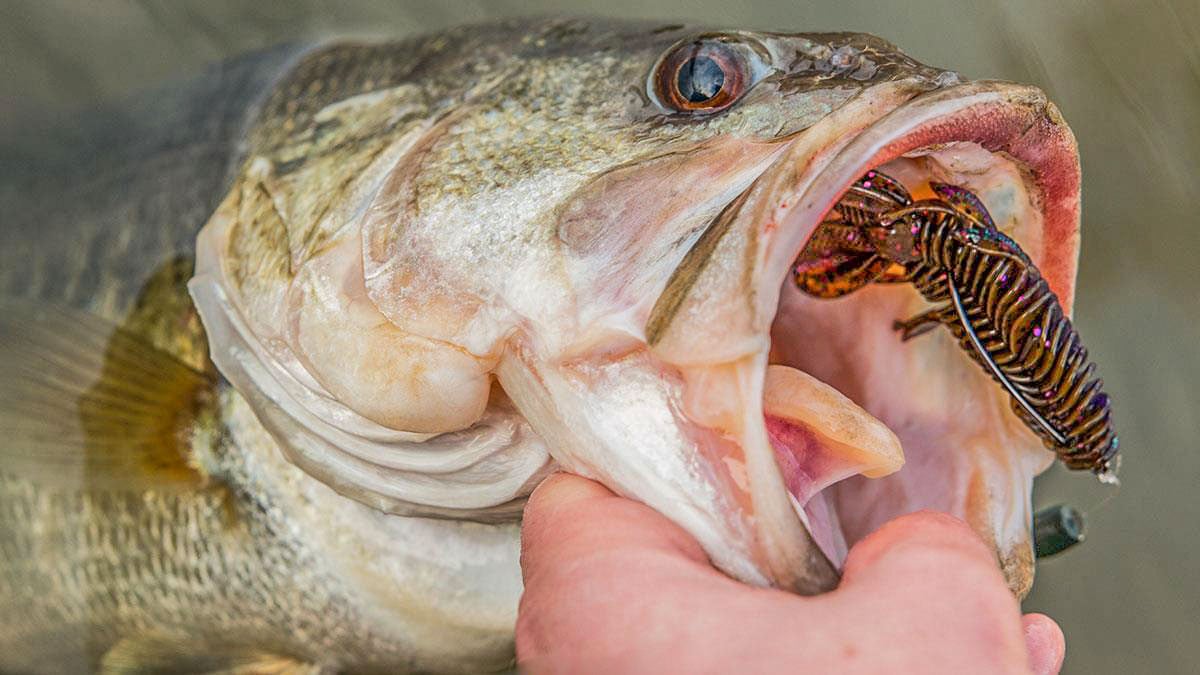
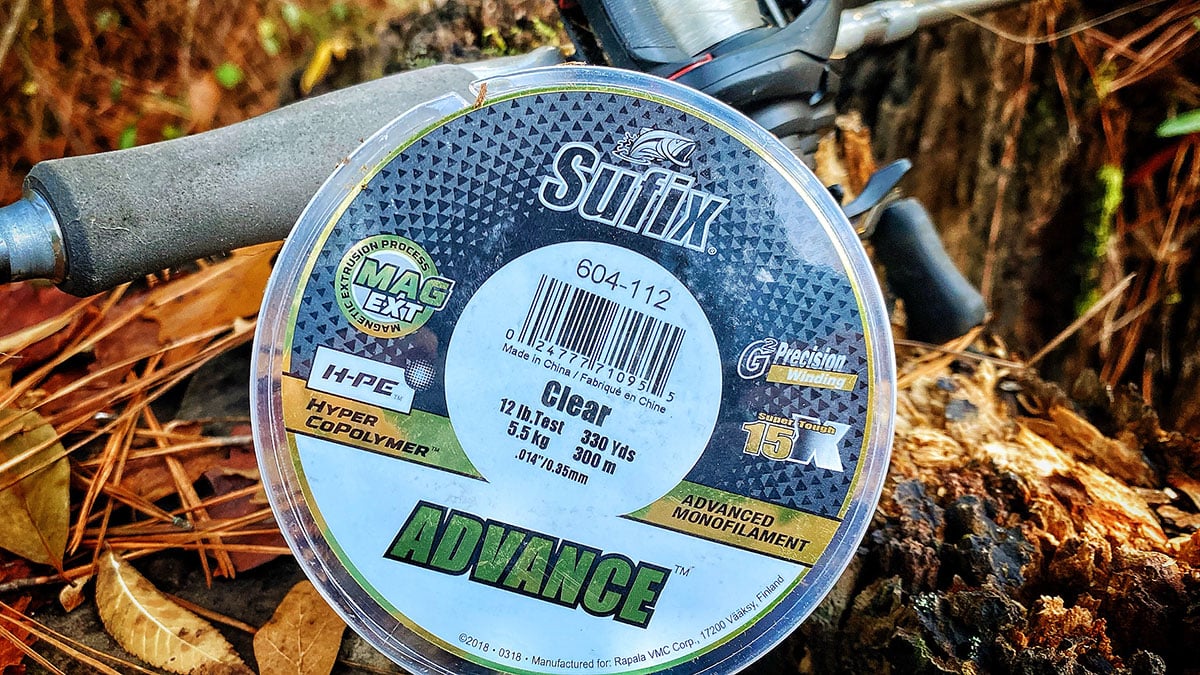
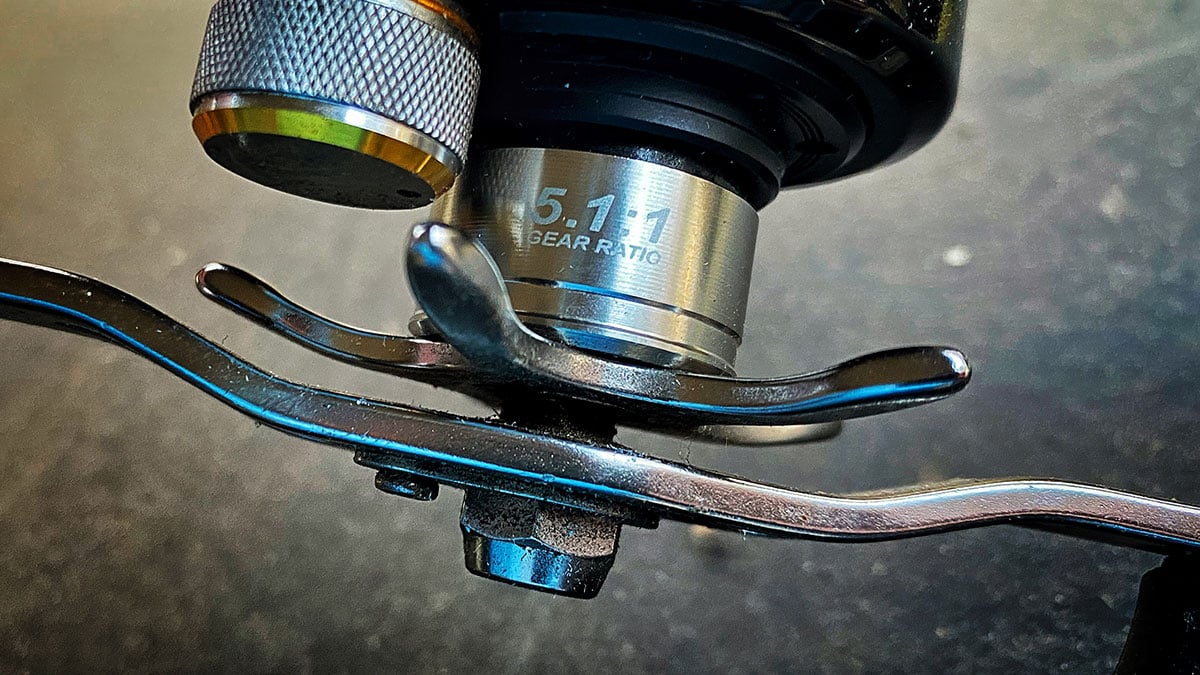
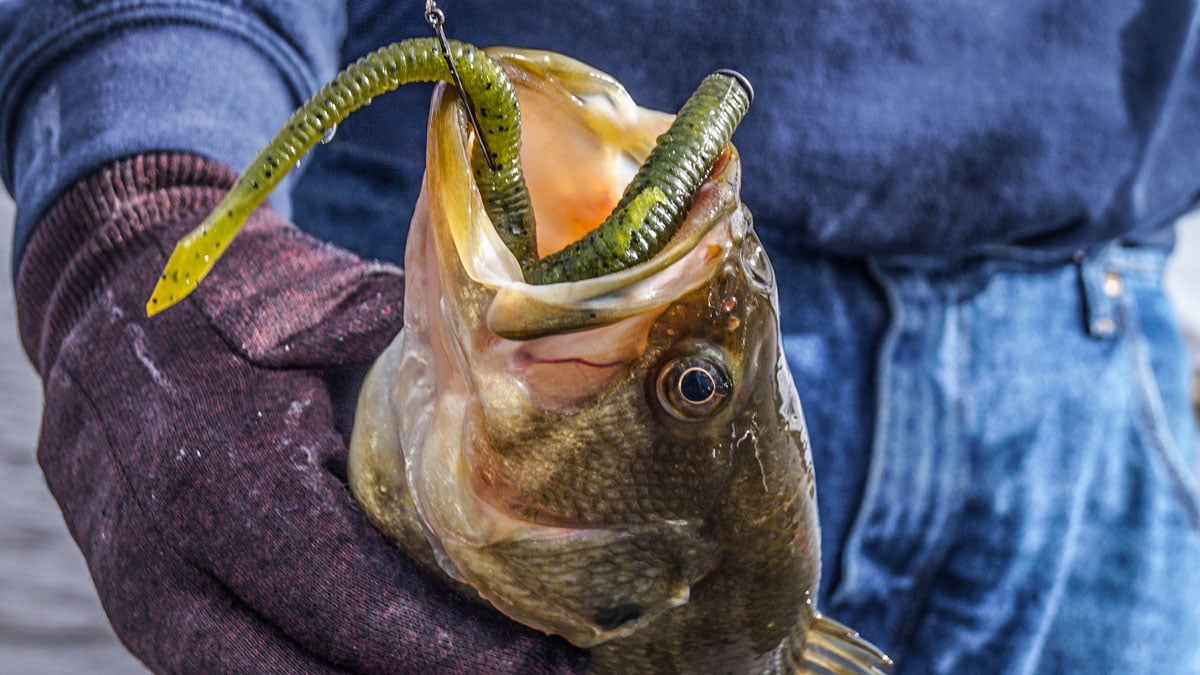
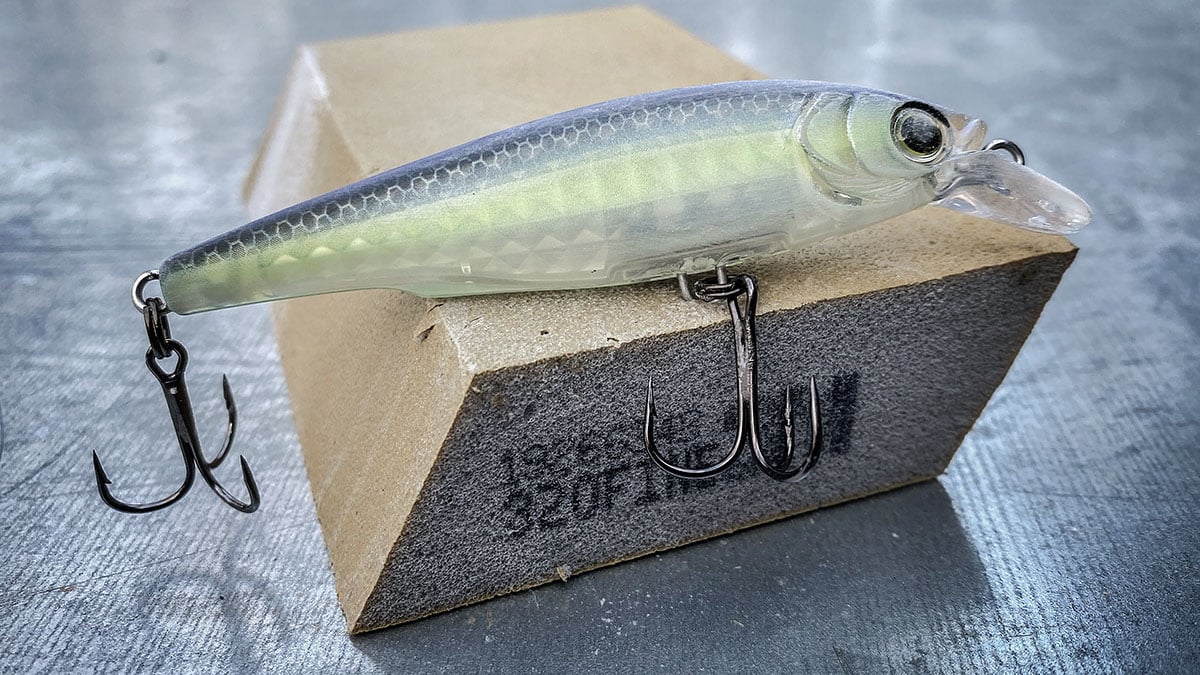

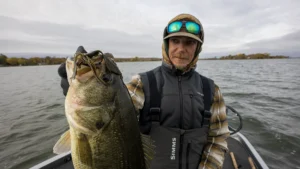


![[VIDEO] McClelland’s Top 7 Winter Bass Baits Explained](https://www.wired2fish.com/wp-content/uploads/2024/12/winter-bass-fishing-lures-300x169.webp)
